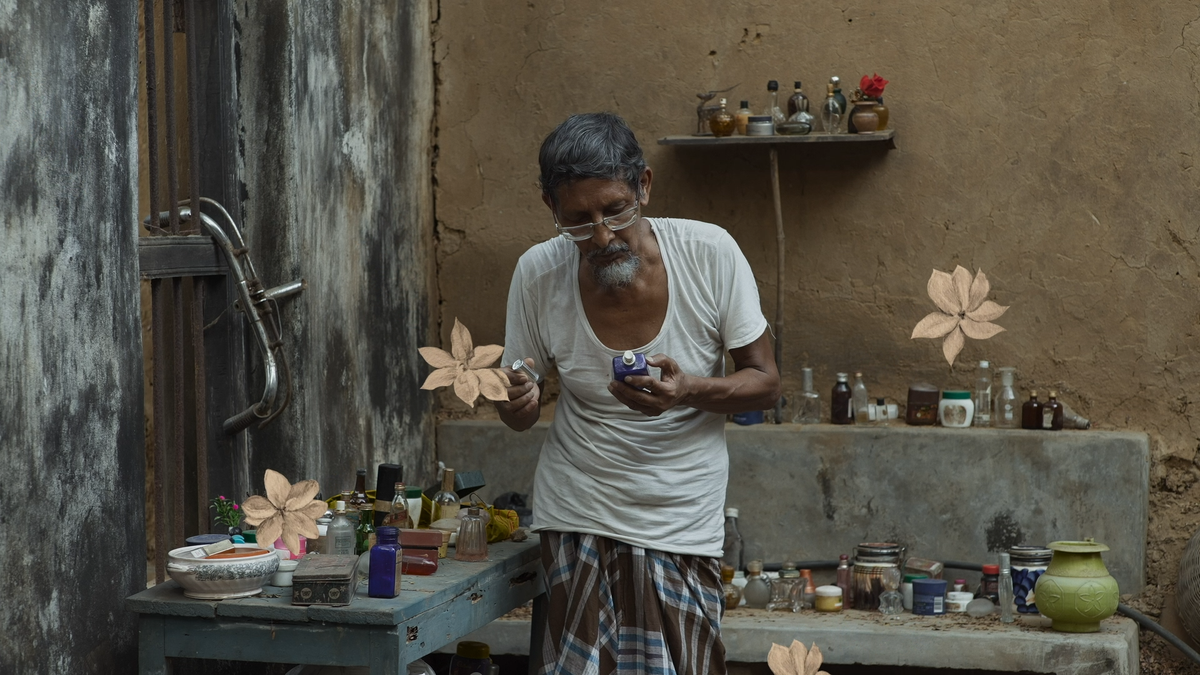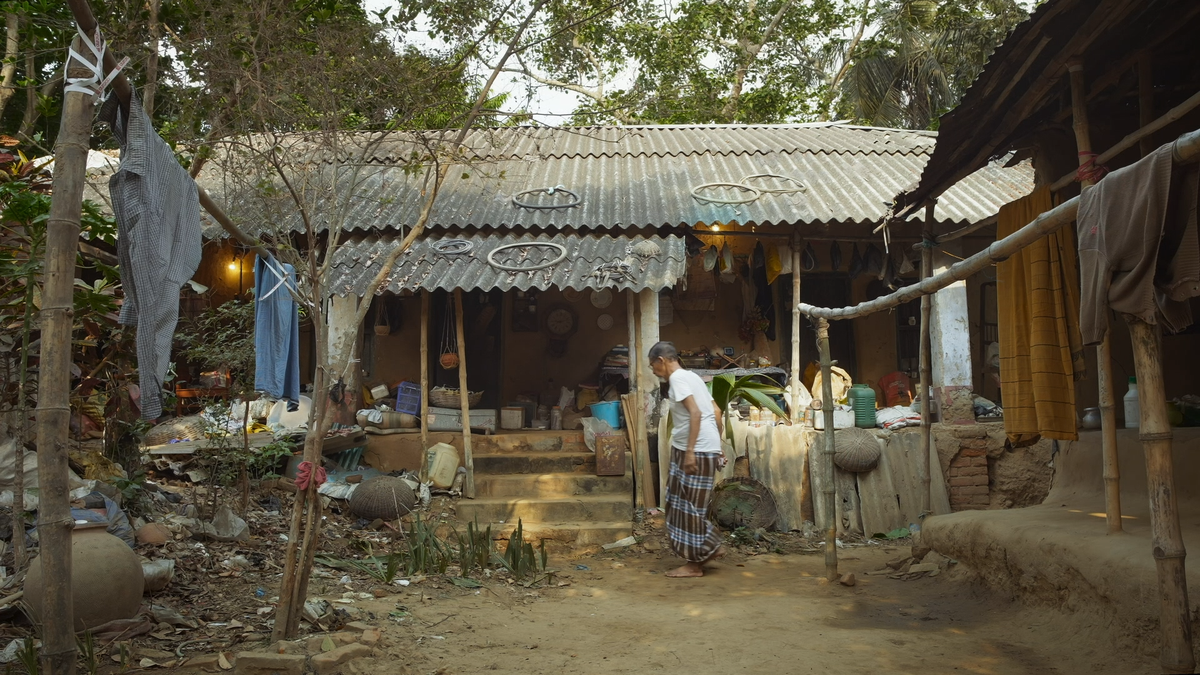A 71-year-old Muslim villager’s daily items “ho” win a coveted attraction in London’s V&A Museum

Selim Khandakar, 71, has always dreamed of making museums for more than 12,000 items that he had collected for more than 50 years in his village. Thanks to his artist niece, Ohida Khandakar, a small part of the series has arrived at one of the best museums in the world – the Victoria and Albert Museum (V&A) in London.
Ohida, 31, turns her uncle’s lifelong obsession into an installation and movie – Dream about your museum – Win the V&A prestigious contemporary art and design award inspired by Islamic traditions. This work is not only a tribute to her uncle’s call. It also challenges the structure of the colonial museum and asks whether ordinary personal objects deserve a place in the museum. Can museums have a flexible and inclusive space that displays narratives of ethnic communities and customs? Is private collection an exclusive privilege for the rich?
The installation and film “Dream Your Museum” of Victoria and Albert Museum in London.
Selim worked as a doctor in Kolkata and began collecting random items since 1970. The stamp exhibition first aroused his interest, prompting him to start collecting them. He also encountered an exhibition of vintage items from Mallik Bari, one of the Kolkata heritage houses. “This is a record of what objects were used in ancient times and how life came through,” Selim told me in his Zoom call in Kelepara, a village near Hooghly, West Bengal. “This inspired me to start collecting records of any life and era that felt like ordinary people. From bus tickets to stamps to supplement pens, I don’t throw anything away.”
A variety of rare and ordinary items constitute Selim’s collection. Old clock, etched ceramics, vintage records and music players, trace back to letters of partitions, perfume bottles, crystal rocks, hand fans, stamps, violins, ink pots, cameras, train tickets, receipts, receipts, and even admission answers from the 70s!

Selim Khandakar is surrounded by objects he has collected over the years. |Photo source: Anand Kumar Ekboty
Search for baby clothes
Most of Selim’s collection is housed in tin trunks, scattered in his home in Kelepara. Sometimes, when Selim takes them away, the people in the village explore and interact with objects. There is curiosity, awe, some ridicule, some laughter, and those who know history and records, even encourage.
Ohida’s film captures Selim’s suitcase running through rural fields, stopping by the river to rinse some crystal stones and pressing them into the sun. “Where did you find these, Nanu? ” Selim replied that his eldest niece, Maria, appeared in the movie.

Selim Khandakar took his trunk through the country fields. |Photo source: Anand Kumar Ekboty
Ohida, who studies art at the Government Arts Academy in Kolkata and Jamia Millia Islamia in New Delhi, said it is sometimes difficult to understand what keeps her uncle moving forward. As his angry family often believes, will it hover? She and Selim don’t think so. Instead, he thinks his collection is very similar Dream about your museumtell stories. “Collection is my way of showing people things around the world to people,” Selim notes. “Just like rare coins date back to the Mughal era or old-fashioned perfume bottles from around the world. Often, people here don’t have the chance to go to the city to see something like this. That’s what keeps me going.”

Selim Khandakar’s house, which was destroyed after a whirlwind. Image source: Anand Kumar Ekboty
Selim’s property, once exhibited in his modest muddy house, is now destroyed, his property is almost discarded by his family until Ohida decides to record it digitally. She re-recognizes her uncle and his collection while she is trapped at home during the pandemic. Given its scope, it’s a striking range – from record players to baby clothes from the 80s. “It even has a bunch of nails [Selim’s own] In the box. It reminds me of Marcel Duchamp’s Dadaist fountain exhibition [1917]where he showed an upside down urinal. This object challenges the traditional concept of what belongs in the museum. These items, including broken boards passed to generations, show the power of storytelling through objects. ”
When asked about nails, Selim smiled. “I once visited an exhibition where I saw the art of making with my nails and thought I would do it with me. It made me curious, so I kept them.”
What is a museum?
Curiosity has always been the driving force behind Selim’s obsession, and that’s what Ohida celebrates in her work. Maria accompanied Selim throughout the film, asking him curious questions about the subjects in his collection, trying to peek into his mind. Ohida starts shooting Dream about your museum As an entry for the 2022 Berlin Biennale, she got a good harvest there and ended up awarding her with the V&A Award.
Filmmaker Ohida Khandakar
Growing up in Kelepara, Ohida, she didn’t enter the museum until she studied art in Kolkata. “I realized my dream of learning art and going beyond a village where many women still have no voices and get married early. It makes me wonder – are there limits for our dreams? Is there limits for my uncle’s dream, a countryside, elderly Muslim men?”
With funding for the award, Ohida now hopes to create a museum for her uncle’s collection and the cultural spaces of the village. “We need museums that can be visited as alternative spaces for rural minority communities’ narratives; safe spaces for women without opportunities; and those who may not normally not visit traditional museums due to lack of knowledge, distance or financial constraints.”
exist Dream about your museumher camera gently photographed Selim at the home of his shaky ancestors. Even after 50 years, he has no permanent place to express his frustration to show his precious collection. “Now I will build a museum on the moon,” he declared.
The author is a freelance journalist and co-author of “Rethinking” (2022).
publishing – April 18, 2025 at 10:14 am




